American Customer Displaying Auspicious Kakejiku in Tearoom in the New Year
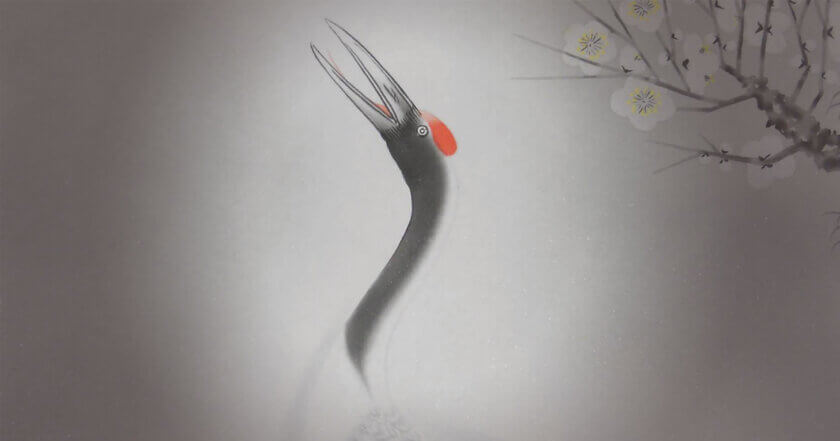
Since different kakejiku hanging scrolls are used for respective purposes in accordance with season, occasion, etc., there are various kinds of kakejikus.
Kakejiku can be broadly classified into 5 kinds – Usual Kakejiku, Auspicious Kakejiku, Buddhist Kakejiku, Seasonal Kakejiku, and The Girl’s and Boy’s Festival Kakejiku.
It is the original way of enjoying kakejiku that when a host treats guests, the host displays in tokonoma (an alcove in a traditional Japanese room) the kakejiku the host selects which is the most suitable for the season, occasion, etc., thereby implicitly expressing to the guests the feeling of the host through the kakejiku.
That means the Tokonoma plays a role as a kind of message board.
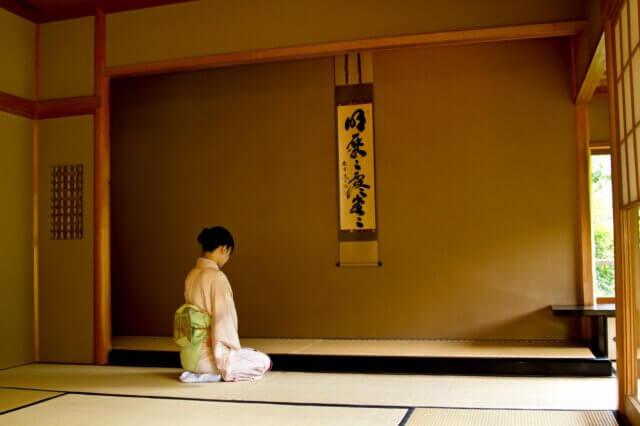
Kakejiku Displayed in Tokonoma
This kind of way to enjoy works of art is quite rare in the world.
It is the general way in the Western countries to enjoy many framed works displayed on the wall – gallery wall style.
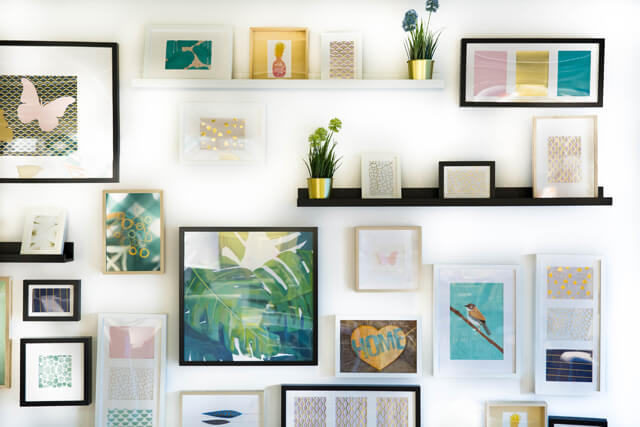
This Japanese way of enjoying art is related to the thinking of Zenshū (Zen Buddhism).
In Japan, the thinking of Zenshū has been also historically infiltrated so deeply into the world of art and culture as to affect them greatly.
Zenshū values the serenity of mind and the simplicity of things to attain the state of spiritual enlightenment which is the final goal of Buddhism.
Behind this idea lies the way of thinking in Zenshū that the state of mind to attain spiritual enlightenment should be calm and serene and that all truth must be extremely simple to be understood intuitively.
Such a way of thinking has been also adopted in Japan’s culture of tea ceremony, leading to the creation of the custom to enjoy kakejiku which has been regarded as the most important tool among tea-things.
That kind of thinking has developed into the thought – it is important for host and guest to engage in their spiritual exchange through focusing only on the most important matter on the occasion, which is realized by reducing the work of art to be enjoyed on the occasion to the minimum essentials and by making the host and guest concentrated more on the essence of art, eventually giving rise to the present Japanese way of enjoying works of art.
This is how kakejiku is originally enjoyed in Japan. There are of course people living overseas who have deeply understood such a way of enjoying kakejiku, changing kakejiku in accordance with each season or occasion.
We received an order of a kakejiku from a customer living in the U.S. in January of 2021.
He had already purchased before a kakejiku with autumn leaves painting by Sakamoto Yukino in the spring of 2019, which he said would be displayed in his chashitsu(tearoom).
He purchased this time Auspicious Kakejiku for the new year. Following is the kakejiku he purchased, the one with the painting of pine, bamboo, plum trees, crane, and turtle.
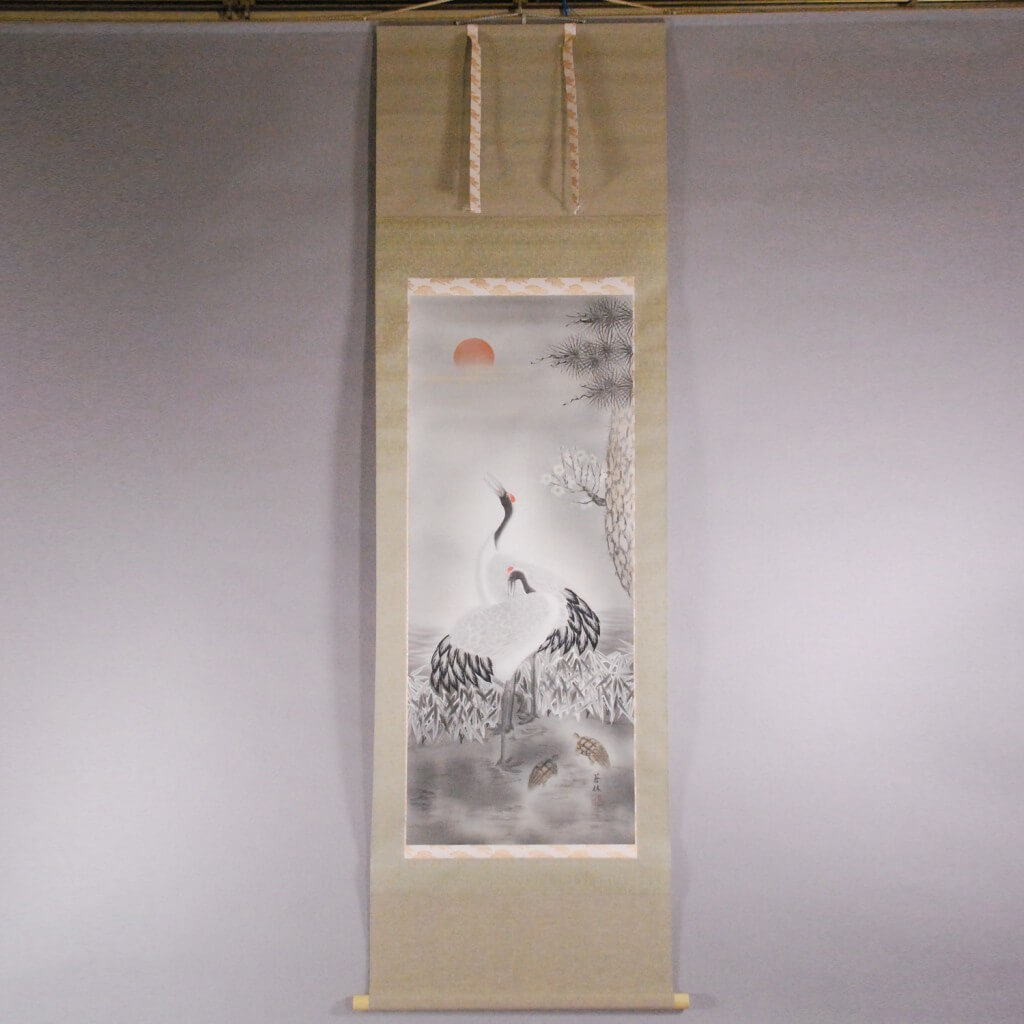
Please kindly refer to the link below for Auspicious Kakejiku including the one with the painting of pine, bamboo, plum trees, crane, and turtle.
After receiving the Auspicious Kakijiku he had ordered, he kindly sent us a message expressing his pleasure accompanied with the photograph showing the kakejiku displayed in his chashitsu(tearoom).
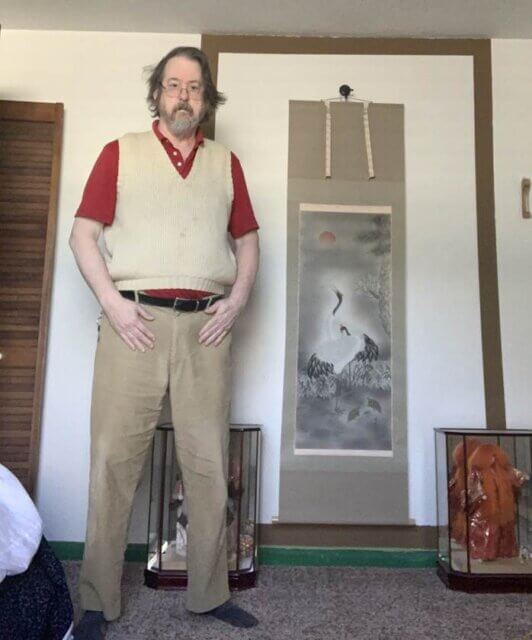
With the white wall encircled with wooden materials and a green sheet on the floor, the space has somehow the atmosphere of tokonoma in Japan.
In front of the kakejiku has been displayed Japanese dolls put in a case, enabling us to feel more Japanese mood.
Thank you so much for purchasing the kakajiku at our shop. We sincerely wish you a wonderful year in 2021!!
We have undertaken the sales of kakejiku hanging scroll on our website.
We have more kakejikus for sale besides those posted on the site. Please feel free to contact us if you have any inquiries.



